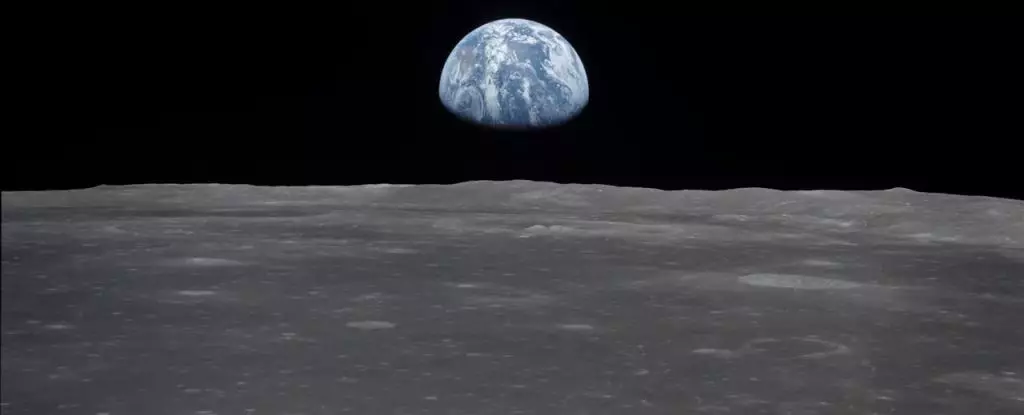The Moon, often thought of as bare and exposed to the void of space, actually possesses a thin layer of gases surrounding it known as an exosphere. This exosphere has puzzled scientists for years, as the Moon lacks a magnetic field like Earth to confine its atmosphere. However, recent research has shed light on the source of the Moon’s replenishing gasses.
Researchers have discovered that tiny micrometeorites, no larger than grains of dust, continuously impact the lunar surface, vaporizing lunar dust and releasing atoms into the space around the Moon. Studies conducted by geochemists at the Massachusetts Institute of Technology (MIT) have confirmed that meteorite impact vaporization is the dominant process responsible for creating the lunar atmosphere. This process has been ongoing for billions of years, maintaining a steady state due to the continuous replenishment by small impacts all over the Moon.
The diffuse nature of the Moon’s atmosphere presents a challenge for scientists attempting to study it. While detectors left by the Apollo missions have detected various atomic components within the lunar exosphere, the exact origins of these gasses have remained elusive. Micrometeorite impacts and ion sputtering – a process involving the ejection of atoms from the lunar surface when bombarded by charged particles from the solar wind – have been identified as significant contributors to the lunar exosphere.
In an effort to delve deeper into the processes responsible for generating and maintaining the lunar exosphere, researchers analyzed data from the Lunar Atmosphere and Dust Environment Explorer (LADEE). This analysis revealed that both micrometeorite impacts and the solar wind play a role in shaping the lunar exosphere. Measurements taken during meteorite showers showed an increase in atmospheric atoms, indicating the impact of micrometeorites. Similarly, observations made during periods when the Moon was shielded from the Sun suggested changes in atmospheric atoms, highlighting the influence of solar activity.
To further refine their understanding, scientists turned to actual samples of Moon dirt collected during the Apollo missions. By analyzing the presence of potassium and rubidium – elements known to occur on the Moon and easily vaporized during impacts – researchers were able to differentiate between the effects of micrometeorite impact vaporization and ion sputtering. The results indicated that while both processes contribute to the lunar exosphere, micrometeorite impact vaporization plays a more significant role, with its contribution exceeding that of ion sputtering by a ratio of approximately 70:30.
The findings of this study have implications that extend beyond our understanding of the Moon. Similar processes may be occurring elsewhere in the Solar System, on asteroids and other moons. Missions aimed at retrieving samples from these celestial bodies, such as the European Space Agency’s planned sample return mission to the Martian moon Phobos, could provide further insights into the mechanisms governing exospheres throughout the Solar System.
The source of the Moon’s exosphere has been a longstanding mystery that has now been partially unraveled through meticulous research and analysis. By studying the effects of micrometeorite impacts and ion sputtering on the lunar surface, scientists have gained valuable insights into the processes that shape the lunar atmosphere. These findings not only enhance our understanding of Earth’s satellite but also offer a glimpse into the dynamics of exospheres on other celestial bodies within our cosmic neighborhood.


Leave a Reply